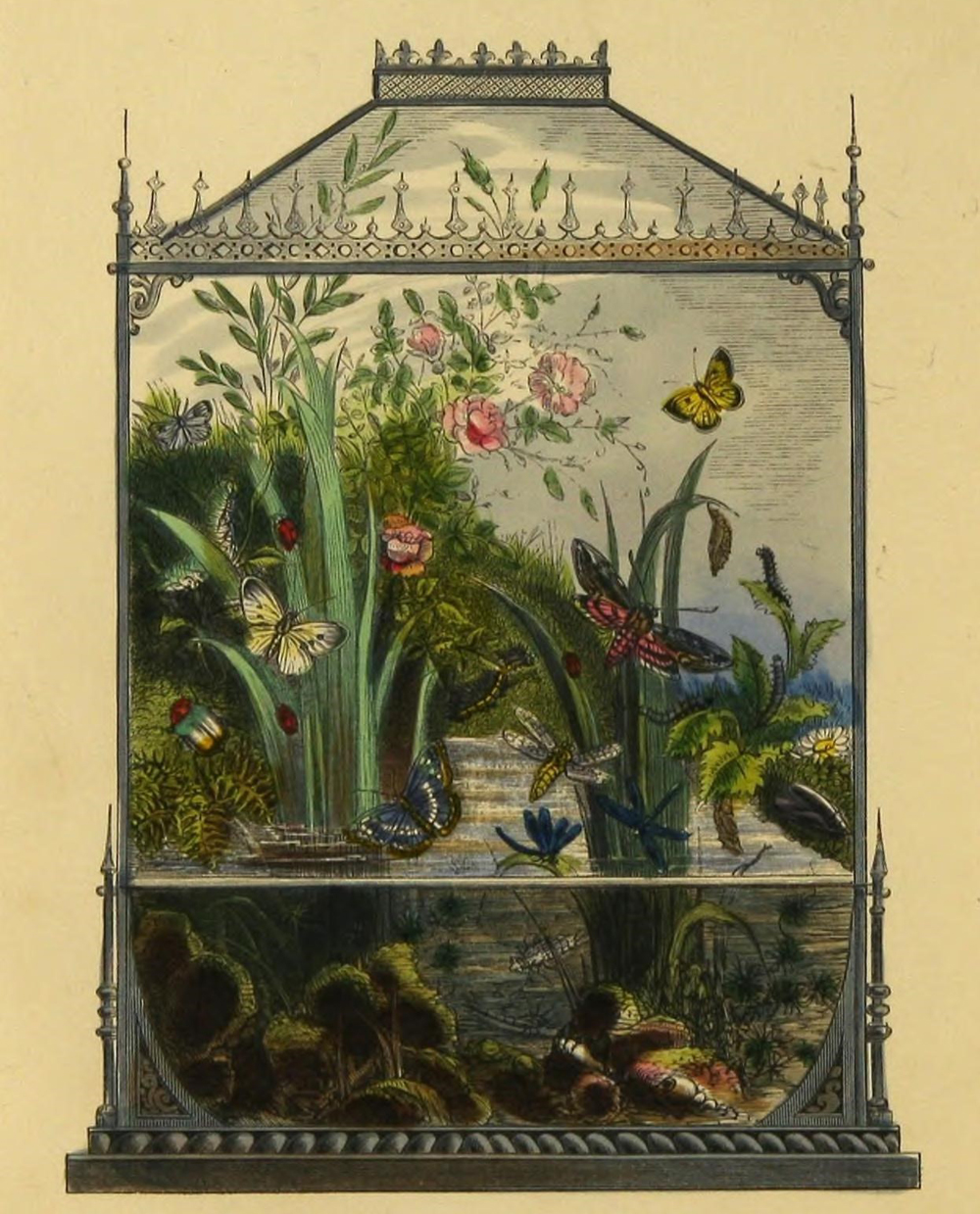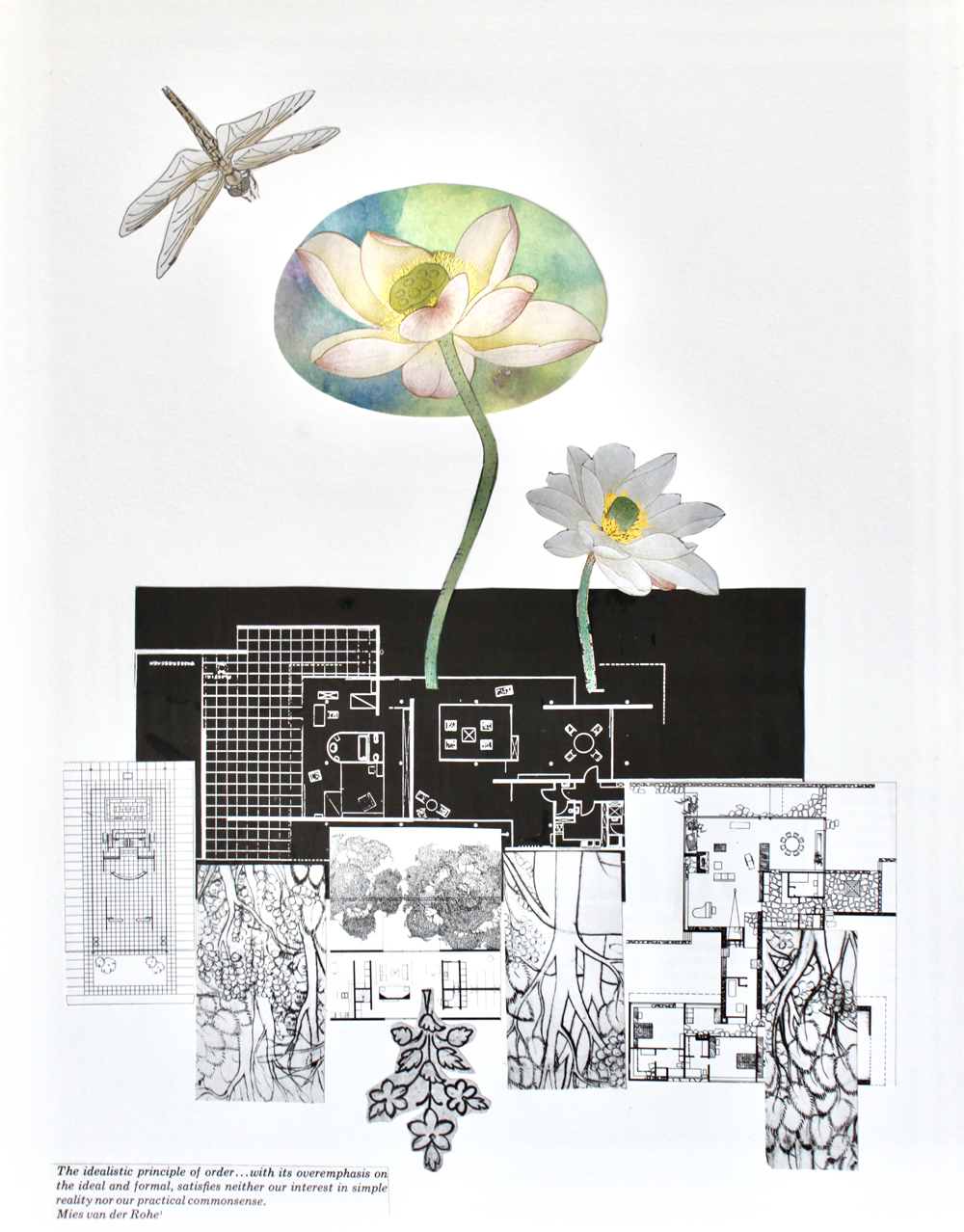
illustration in The Butterfly Vivarium; or Insect Home by Henry Noel Humphreys, published by WIlliam Lay, 1858. Collection of the Biodiversity Heritage Library at Cornell University.
WORKSHOP AT KOLAJ FEST NEW ORLEANS 2025
The Exquisite Vivarium
EVENT WEBSITE | REGISTER
Kolaj Fest New Orleans is a multi-day festival and symposium about contemporary collage and its role in art, culture, and society, 25-29 June 2025. Visit the website to learn more, see an overview of the program, and register to attend.
In 1829, London surgeon Nathaniel Bagshaw Ward hermetically sealed a glass case containing the chrysalis of a sphinx moth and damp soil. To his amazement, a fern and grass seedling sprouted. Moisture condensed to the case’s walls during the day, but returned to the soil at night. The chrysalis became a butterfly. Ward had accidentally made a vivarium, a self contained ecosystem, a mini garden of life.
The vivarium is a point of inspiration for Cincinnati, Ohio artist and writer Nandita Baxi Sheth. “Her pedagogical practices follow the idea that everyone is an artist and that art can change the world. Her curricular practices implement those practices through radical classroom instruction including collage, surrealist practices, and alternative modes of production and presentation.” Sheth’s research “develops multispecies aesthetic through examining bees and the pollination as biological, aesthetic, and creative processes. Her research interests include posthumanism, new materialisms, climate change fiction, and affect theory. She is interested in the potential of art and storytelling to imagine and evoke affective experiences that re- invigorate and re-enchant static concepts of nature; shifting from binaries to entangled interconnectedness. She considers arts-based processes as alternatives to language for philosophical thinking, that is, thinking through materials and making as an artist-philosopher.”

Courtesy of the artist.
At Kolaj Fest New Orleans, Sheth will lead a workshop, The Exquisite Vivarium, during which participants will create collaborative spoken word poetry and collages and experience Sheth’s unique pedagogical approach. The workshop adapts the Surrealist game of Exquisite Corpse and prompts participants to create an environment, ecology, or world for future beings. “Rooted in the proposition that future worlds must be collaborative, the poetic process of black out poetry is rendered collaborative resulting in a spoken word evocation,” wrote Sheth. “Using a variety of collage materials, participants create vivariums for future beings (human, nonhuman, imagined) through collage according to the hidden and unfolding principles of the Exquisite Corpse game. Important to this making effort is the presentation which will include both the collaborative spoken word poetry and the unfolding of the collaborative (multiple) collage vivariums with guided discussion about the process and learning.”
Workshops at Kolaj Fest New Orleans
Workshops at Kolaj Fest New Orleans offer participants the opportunity to engage with their process or materials in a new way; explore subjects or themes; or practice a new collage technique to make. Over a dozen workshops take place during the festival.
ABOUT THE PRESENTER
Nandita Baxi Sheth, Ph.D., holds a Bachelor of Arts from Rice University with majors in Architectural Studies, Art, & English, as well as a Master of Community Planning and Master of Visual Arts Education from the College of Design, Architecture, Art, and Planning at the University of Cincinnati. She has worked as an architect, planner, art educator, and is a practicing artist. Her creative practices include painting, collage, and journaling. She has taught courses in the Masters of Art Education program in the School of Art and co-led the Biodesign Challenge program, including the undergraduate course Sticky Innovation. She completed her doctoral work at Institute for Doctoral Studies in the Visual Arts and her dissertation, Being Melliferous: Towards Multispecies Aesthetics, earned the 2025 Outstanding Dissertation Prize. Learn more at www.melliferous.org.
